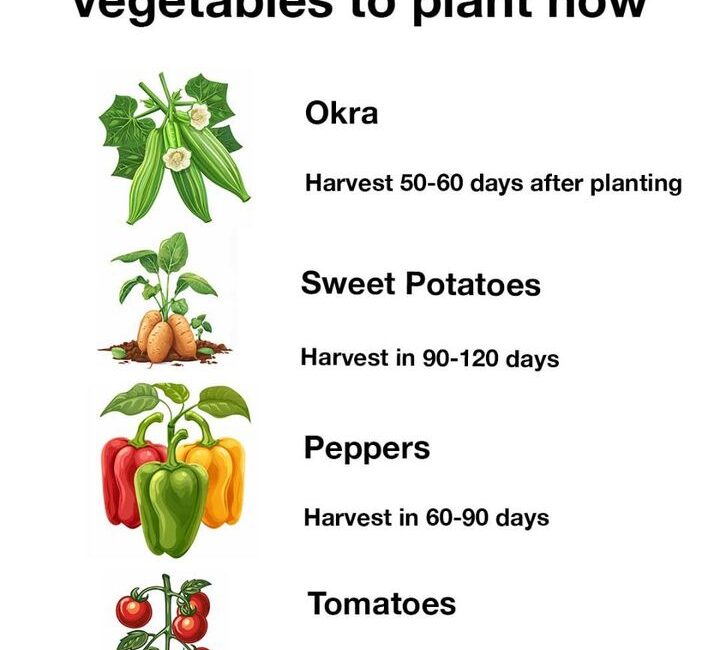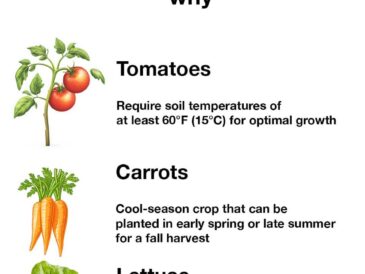When the summer heat intensifies, many gardeners face the challenge of growing vegetables that can withstand high temperatures. Fortunately, there are several heat-tolerant vegetables that thrive even during hot weather, allowing you to enjoy fresh produce throughout the warmest months. These heat-tolerant vegetables are specially adapted to thrive in hot conditions, and with proper care, they can offer a bounty of flavorful harvests. In this comprehensive guide, we will explore ten heat-tolerant vegetables you can plant now, along with tips on when to harvest them, how to care for them, and other important considerations for growing them in hot weather.
1. Tomatoes (Solanum lycopersicum)
Tomatoes are one of the most popular vegetables grown in home gardens, and they perform well in hot weather, provided they receive adequate water and sunlight. There are many varieties of tomatoes, from small cherry tomatoes to large beefsteak types, all of which can tolerate the heat when given the proper care. However, extreme heat can cause issues such as blossom drop and sunscald, so it’s important to choose the right variety for your climate.
When to Plant:
Plant tomatoes after the last frost date, once the soil has warmed up to at least 60°F (15°C). In areas with hot summers, it’s best to plant early varieties that mature quickly.
When to Harvest:
Tomatoes are typically ready to harvest 50 to 85 days after transplanting, depending on the variety. Look for tomatoes that have fully ripened, with a rich color and a slight give when gently squeezed. Harvesting in the morning when the weather is cooler can help prevent them from becoming overripe too quickly.
Tips for Growing:
- Select heat-tolerant varieties, such as “Heatmaster,” “Sun Gold,” or “Solar Fire.”
- Provide consistent watering to avoid blossom-end rot, which is common in dry conditions.
- Mulch around the base of the plants to retain moisture and regulate soil temperature.
- Consider growing tomatoes in containers to give them more control over soil conditions and heat exposure.
2. Peppers (Capsicum spp.)
Peppers, both hot and sweet varieties, are well-suited to hot climates and thrive in full sun. Like tomatoes, they require warmth to produce an abundant harvest, but they may need extra care during extreme heat to avoid sunburn on the fruit. Sweet peppers, such as bell peppers, and hot peppers, such as jalapeños and habaneros, are all great options for hot weather gardening.
When to Plant:
Plant peppers in late spring or early summer after the last frost has passed, and when the soil temperature reaches 65°F (18°C). Peppers need a long growing season, so it’s important to wait until the soil is consistently warm before planting.
When to Harvest:
Peppers are usually ready to harvest 60 to 90 days after planting, depending on the variety. Sweet peppers can be harvested when they change color (from green to red, yellow, or orange, depending on the variety). Hot peppers can be harvested when they reach their mature color, which is often red or yellow.
Tips for Growing:
- Provide plenty of sunlight and well-drained soil with a slightly acidic pH (6.0 to 6.8).
- Use drip irrigation to deliver consistent moisture, as peppers do not tolerate dry spells.
- Fertilize lightly with a balanced fertilizer, as excessive nitrogen can result in lush foliage but fewer fruits.
- Consider using shade cloth to protect peppers from the hottest part of the afternoon sun.
3. Okra (Abelmoschus esculentus)
Okra is a vegetable that loves hot weather and thrives in temperatures above 75°F (24°C). Originating from Africa, okra is well-suited to tropical and subtropical climates, and it flourishes during the hottest months of the year. Okra plants are tall and have large, broad leaves that provide some natural shade to the soil.
When to Plant:
Plant okra seeds after the last frost date when the soil temperature is consistently above 65°F (18°C). Okra grows best when the soil is warm, and it requires full sun for optimal growth.
When to Harvest:
Okra is typically ready to harvest 50 to 60 days after planting. The pods should be picked when they are about 2 to 4 inches long. If left on the plant too long, the pods become tough and fibrous, so it’s important to harvest regularly.
Tips for Growing:
- Space plants 12 to 18 inches apart to give them room to grow tall.
- Okra thrives in well-drained, loamy soil with a pH of 6.5 to 7.5.
- Water deeply and regularly, but avoid wetting the leaves to reduce the risk of fungal diseases.
- To promote continuous harvests, pick pods frequently, which encourages the plant to produce more.
4. Eggplant (Solanum melongena)
Eggplant is another heat-loving vegetable that thrives in warm temperatures. Like peppers, eggplants require a long growing season and can suffer from sunscald in extreme heat, but with proper care, they can produce an abundant harvest. Varieties like “Black Beauty” and “Fairy Tale” are popular choices for hot climates.
When to Plant:
Plant eggplants in late spring or early summer, after the danger of frost has passed. Eggplant seeds should be started indoors 8 to 10 weeks before the last frost, and transplants can be set out when temperatures are consistently warm.
When to Harvest:
Eggplants are typically ready to harvest 60 to 80 days after transplanting. Harvest when the fruit is shiny and firm, with a deep purple color. Gently press on the skin, and if it springs back, the fruit is ready to pick. Avoid letting eggplants ripen too long, as they can become bitter.
Tips for Growing:
- Eggplants need well-drained soil and plenty of sunlight (at least 6 to 8 hours per day).
- Apply mulch around the base of the plants to help retain moisture and keep the soil cool.
- Water regularly, but avoid waterlogging, as eggplants do not like soggy roots.
- Use a balanced fertilizer to encourage healthy growth and fruit production.
5. Sweet Potatoes (Ipomoea batatas)
Sweet potatoes are a warm-season crop that thrives in hot, sunny conditions. They are relatively easy to grow and can tolerate a wide range of soil types, making them an ideal choice for gardeners in hot climates. Sweet potatoes grow well in the ground or raised beds and require a long growing season.
Click page 2 to continue




